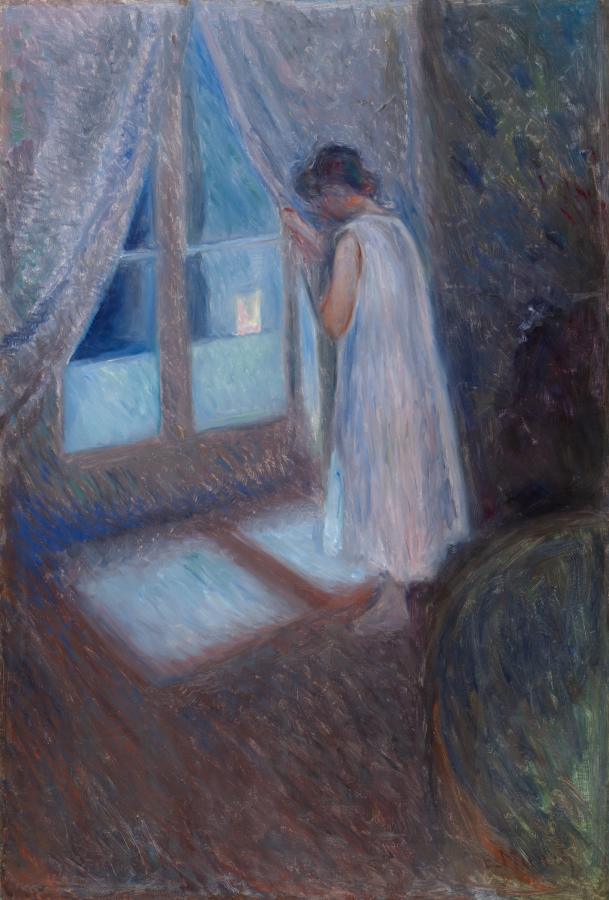Munch, Edvard (1863-1944)
The Girl by the Window
1893
Oil on canvas, 96.5 × 65.4 cm
Art Institute of Chicago, Chicago
Edvard Munch’s life and art — particularly his iconic work The Scream (1893; National Museum, Oslo) — have come to epitomize modern notions of anxiety. Yet the same year he painted his radical image, Munch was experimenting with other styles and themes. Frequent visits to Paris and Berlin between 1889 and 1893 brought the Norwegian artist into direct contact with the Impressionists and Symbolists. These travels encouraged him to adopt their bold brushwork, daring compositions, and imagery. But he nonetheless continued to incorporate the Romantic subjects of the northern European artists long familiar to him, such as a lone figure at an open window. This combination is powerfully manifested in The Girl by the Window, made soon after his return home to Norway. In the dead of night, a young girl in her nightgown stands in a darkened room gazing out at the city. The steep angle of the floor and the deep shadows that obliterate everything in the room, save a suggestion of a piece of furniture at the lower right, create an unsettling and enigmatic scene. Loosely applied, somber brown tones mingle with violets and blues, evoking a feeling of melancholy and anticipation. The window functions as a symbolic barrier, separating the interior from the outside world. The sense of mystery is deepened and complicated by the fact that we cannot see the expression on the girl’s face, nor do we know what she covertly observes. She in turn appears unaware that, as she gazes from behind the curtain at something unknown outside, the artist and implied viewer are watching her. (AIC)
